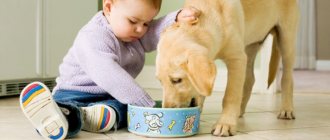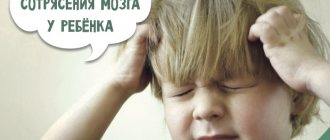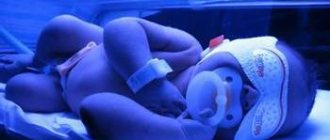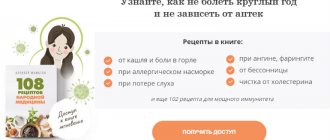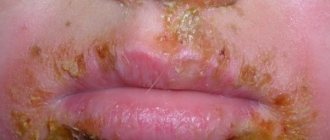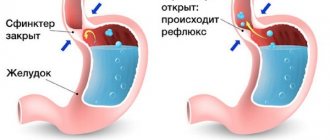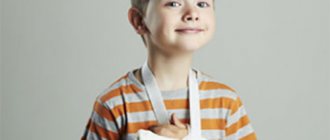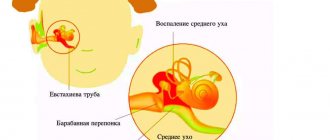What is lichen
The term lichen in a child is understood as a collective concept meaning a fungal and viral disease. The classification includes several types of pathology, differing in course, causes and external manifestations. Ringworm on the skin of a child occurs more often under the age of 14 years.
When the first unusual rash appears, parents should contact a dermatologist, infectious disease specialist, or pediatrician as soon as possible. This is due to the high degree of contagiousness of the disease. For this reason, sick children pose a great threat to the people with whom they come in contact.
Viral and fungal lichen requires timely initiation of treatment. Advanced forms are difficult to treat, and it takes a lot of time. Depending on the type, ringworm may resolve on its own. Some variants of the disease return again with the same symptoms, while others become chronic.
The incidence rate increases significantly in the summer and autumn seasons. During this period, specific signs appear and treatment of lichen must be comprehensive in order to eliminate the manifestations in a short time.
The most favorable period for the development of the disease, according to Dr. Komarovsky, is a warm time, when optimal conditions are created for the reproduction and spread of infection. Heat, moisture in the environment, and increased sweating help increase the permeability of the skin. This makes it easier for the infection to break through the protective barrier. Symptoms of lichen in newborns and older children appear when the body's defenses against pathogenic microorganisms are insufficient.
Types of lichen
If you suspect lichen in a child, you should consult a dermatologist as soon as possible. He will be able to give you good advice on how to properly treat lichen, immediately after he determines its type and cause.
There are six common types of lichen - ringworm, vermilion, tinea versicolor, versicolor, pink and scaly.
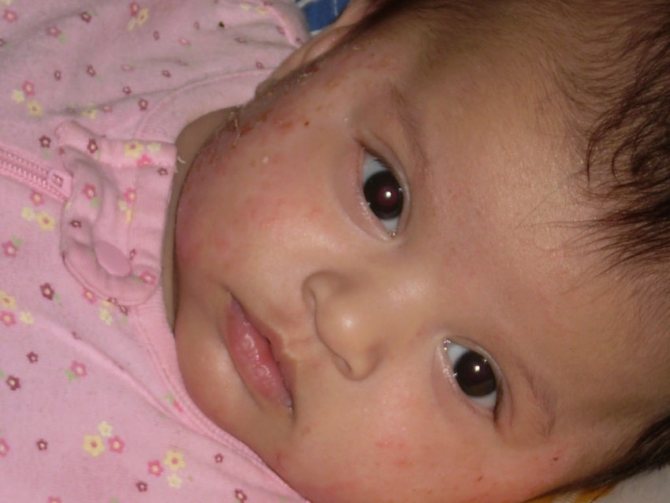
All these types have a number of features, which consist both in appearance and in the symptoms that accompany them. In addition, the type of treatment may differ, as well as medications and ointments for lichen. Next, we will look at some of the most frequently encountered types in a little more detail.
Kinds

Of the total number of skin diseases, this disease is one of the 10 most common. The following types of lichen in humans are distinguished:
- shearer;
- pink;
- encircling;
- red;
- pityriasis
Important! Each of these forms has its own causes, specific symptoms and treatment.

To make a correct diagnosis and prescribe treatment, you need to distinguish lichen alba in the photo, pink lichen from other skin diseases.
Signs of illness
Ringworm on a person’s head goes away with some symptoms and timely treatment will be very helpful here.
Features of the course of the disease are divided into superficial and infiltrative-suppurative.
What does superficial lichen of the scalp look like?
The symptoms are as follows:
- first, round-shaped lesions form, in which hair thinning is observed;
- there may be one focus, or there may be several;
- the skin begins to peel off, then gray or whitish scales similar to dandruff form;
- further hair breakage is observed, as well as redness of the skin. Small bubbles form along the edges of the lesions, which later acquire yellow crusts. The size of these areas can reach 10 cm.
In general, this type does not lead to inflammation, but is accompanied by minor itching.
Ringworm on the head (initial stage) looks as shown in the photo below.
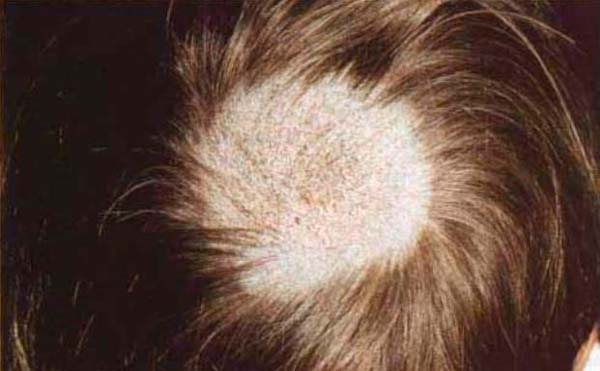
Infiltrative-suppurative, also called deep ringworm, has the following signs and symptoms:
- transmitted to humans only from animals;
- In addition to the usual symptoms, an increase in the size of the lymph nodes may be added, as well as pain in this area, fever, allergic rashes, and general malaise;
- the inflammatory process lasts up to 3 months. After it subsides, a loose brown crust may appear in the center of the outbreak;
- the presence of pink or red plaques is the main symptom of this type of disease. Plaques are uneven, lumpy, tumor-like;
- this type is painful, with pus discharge.
Below you can see lichen on the head of children presented in all its manifestations (see photo).
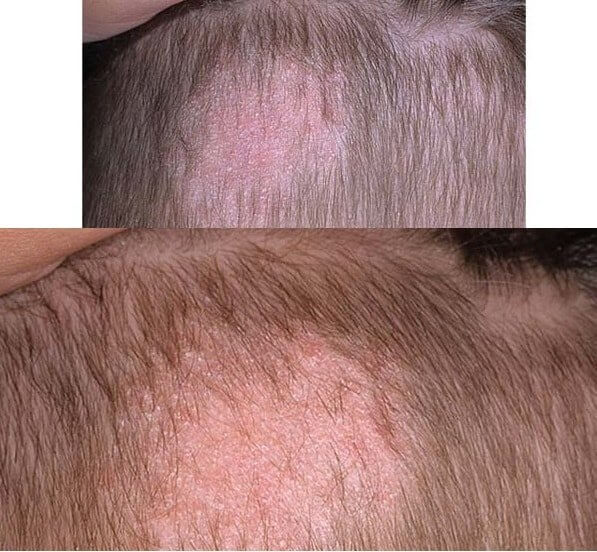
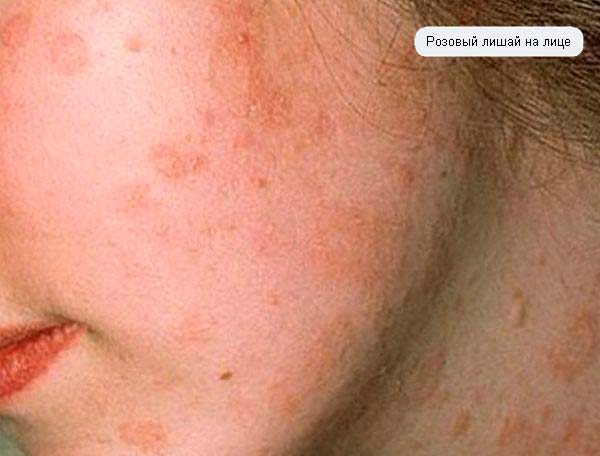
Ringworm

Depending on the type of microorganism, the disease is also called microsporia, which is associated with the pathogen. It is a Microsporum fungus that can infect hair, nails, skin and eyelashes. Microorganisms are classified as dermatophytes due to their favorite localization - the skin. Ringworm is more common in children than in adults. This is due to frequent contact with animals. Another type of lichen in humans is considered trichophytosis. It is caused by fungi of the genus Trichophytos.
Their body is most susceptible to infection due to the structural features of the skin, which at an early age is very thin and does not have a good protective coating. Due to insufficient development of the barrier, pathogenic microorganisms quickly penetrate the tissues and multiply in conditions favorable to themselves.
Reasons for development
The fungi that cause shingles are spread from animals. Depending on the source that infects the child, several forms of the disease are distinguished - anthroponotic and zoonotic. In the first case, humans are considered the root cause of pilaris, and in the second, animals.
The most likely route is stray cats and dogs. Ringworm is also transmitted from sick people. Infection occurs through communication with it or contact with shared devices. Most often, towels, washcloths, bed linen, and dishes become intermediaries in the spread of infection.
Kinds
For ringworm symptoms to appear, special conditions must be created to facilitate penetration. Further development is possible only if one or more factors are present:
- hypovitaminosis;
- chronic foci of infection;
- acute diseases;
- weakened immune system;
- damaged skin.

Lichen manifests itself in several forms - superficial, chronic and infiltrative-suppurative. Each of the above has its own incubation period and specific course. If an infiltrative-suppurative type of lesion develops, then it will be possible to remove the lichen only after 2 months.
Symptoms

The incubation period for the superficial form is about 1 week. With infiltrative-suppurative microsporia, the process is delayed for 1-2 months. In the case of a chronic disease, canine and feline lichen constantly appears when the superficial form is not treated sufficiently.
After the end of the incubation period, specific symptoms appear that allow you to understand the diagnosis:
- Spots on the skin similar to lichen. The white scales that are located on the surface of these formations make the diagnosis easier. The size of the spots can be large or small.
- Ringworm on a child’s head looks like lesions with no hair. They do not fall out, but break off, which creates the impression of stumps in this place.
- Nails begin to peel, become dull and gray. Their defeat is rare.
- Some areas with spots tend to merge. These areas are very itchy.
- Inflammation is not typical except in cases where a secondary infection is associated.

Ringworm spots on the body look like spots that are flaky and have a pink tint. The formation is considered vesicular, which is associated with the formation of a small vesicle in the center. Then it bursts and the area becomes covered with a crust. Lichen can be identified by a spot surrounded by a bright red ridge that is raised above the skin level.

It is not uncommon for additional formations of a smaller diameter to appear on the back, face, limbs, and neck. This feature is called “ring within a ring.” To have a complete understanding of the disease, you need to know what lichen looks like in a person in the photo.
When microspores penetrate the layers of the skin of the scalp, bald patches of various sizes are formed, but with clear edges. If it is cat lichen or was transmitted from a dog, then the areas will look large - up to 10 cm in diameter. When fungi enter after contact with a sick person, the lesions look much smaller in size. In the photo of the child's lichen, upon examination, bald patches and small stumps with dull broken hair are clearly visible.
Causes of ringworm in children
The most common source of infection with ringworm in infants and older children is contact with an infected person or a person who may be a carrier (carrier) of these fungi (anthoropophilic fungi), the use of other people's personal belongings - a comb, elastic bands, towel, underwear, hats, scissors and etc.
But most often, ringworm appears in children after playing with a sick animal (zooanthropophilic fungi). By the way, cats are more often carriers than dogs. There is very little hope that a child will not become infected with lichen after contact with an infected animal, even if he was wearing outer clothing and gloves.
You can become infected with ringworm when visiting public places such as a swimming pool or a hairdresser who neglect sterilization and do not comply with sanitary standards.
There is a possibility of infection from the soil (geophilic fungi), but it is very small because contact with the infected area must be long, and the soil is very heavily contaminated, but sometimes a small scratch may be enough. A barefoot child ran across the grass where a cat or dog with ringworm had recently walked.
The incubation period (time from injury to the onset of primary symptoms) is considered to be 3-7 days. Therefore, it is important to monitor the child’s skin during this period of time if there is a suspicion that the animal has been infected.
Find out more
Pityriasis rosea

The disease also has a second name - Zhiber's lichen. It belongs to a group of viral infections in which the main factor for development is considered to be hypothermia or allergies. Most often occurs in children under 12 years of age.
The initial stage involves the presence of red spots on the skin of the abdomen and limbs. Their shape is most often oval. The first elements are called maternal plaques. In rare cases, parents note a deterioration in general health before the appearance of rashes. After 1-2 days, the red areas begin to peel off. Then, after a few more days, lichen appears on the body, face, and chest. New areas affected by the fungus appear smaller.

Most often, elements appear in skin folds, which is considered their most common location. As scales form, the center of the spots becomes yellow, and the edges acquire a red tint. Due to this type of elements, they are called medallions.
In some cases, instead of a red spot, blisters form on the neck or other part of the body. Full recovery occurs after 2 months. The disease is transmitted by contact from a cat to a person or spreads between people. For this reason, isolation of patients is required for the entire period of illness.
Types and symptoms
There are several types of ringworm, each with its own symptoms. The first signs of infection from animals appear after 7 days. In the case of anthropophilic microsporia, the incubation period ranges from 2 to 6-7 weeks.
On the body
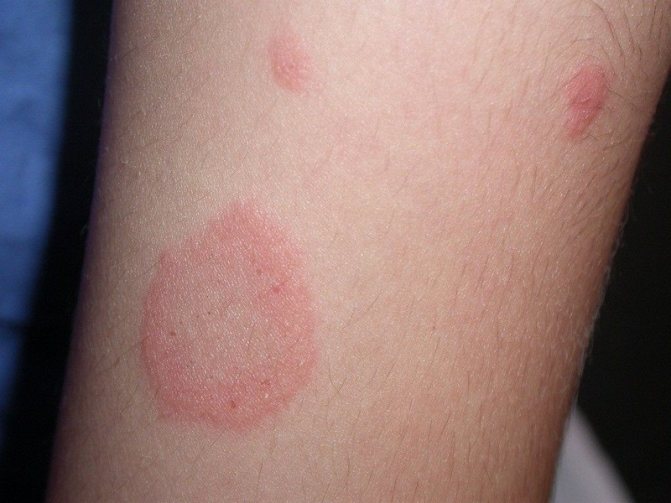
Lichen superficialis affects smooth skin. It is very similar to pityriasis rosea, but differs in that it appears on any part of the body and lasts for several years, while pityriasis rosea will not bother the patient for more than 8 weeks. Lichen superficialis appears as bright red spots and itchy skin.
On the head
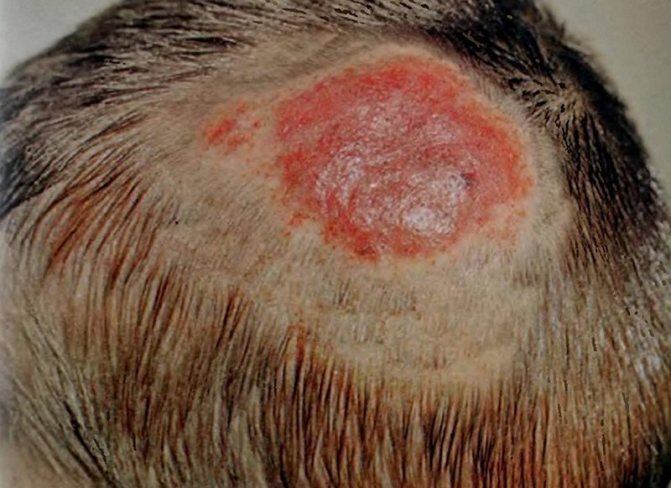
Ringworm on a child's head affects the hair follicles. The hair breaks off, a cut spot is formed, around which bubbles are located. There can be many such spots. Also, patches of flaky skin may appear on the face. They should not be confused with dandruff.
Chronic
Chronic lichen occurs only in women. Chronic lichen can be found on the hair, skin and nails. In the case of the nail plate, its color changes from pink to gray.
Purulent
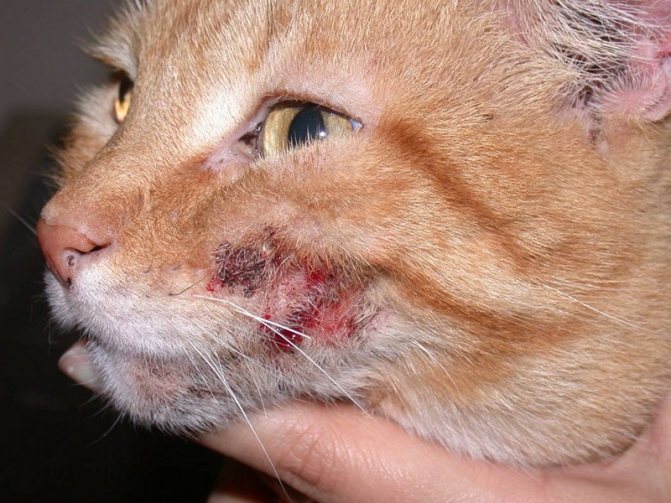
The purulent form of lichen affects the hair follicles. The main carriers are yard animals. The first symptoms are similar to inflammation or a cold. The patient develops allergic rashes and plaques on the head. If you open the follicle, pus may come out. When the inflammation goes away, brown crusts appear in place of the plaques.
Shingles

The disease is caused by the herpes virus. Children over the age of 12 are prone to it. Symptoms of shingles appear only in those who have already had chickenpox. From this moment on, type 3 virus remains in the body for life. A number of predisposing factors contribute to the appearance of the disease:
- frequently ill children;
- newborns;
- with oncology;
- in the presence of chronic diseases;
As soon as the immune defense becomes insufficient, the herpes virus, which is in a dormant state, begins to actively manifest itself.
Symptoms
It is not immediately possible to recognize herpes zoster in children. Elements often appear on the leg and torso. The following signs are characteristic:
- Increase in body temperature.
- Chills.
- Enlarged lymph nodes.
- Burning, stinging or itching in the areas where the rash appears.
- Decreased appetite.
At the beginning of its development, the first signs in the form of ARVI may appear. After 1-2 days of development of nonspecific symptoms, lichen colds begin to actively manifest themselves. Pink bubbles appear along the nerves (intercostal spaces are a common location for rashes). Gradually they merge. After a week, the elements dry out and the surface becomes covered with crusts.
Knowing everything about lichen, parents should exclude the possibility of scratching the elements on the child’s skin. At an older age, he needs to explain this. The presence of an open wound in an infant when scratching will lead to a secondary infection. Against the background of reduced immunity, it will begin to actively multiply, which will result in the addition of concomitant pathology.
Ringworm

The presented form is not common in childhood. Its etiology is varied and in some cases, it is not possible to determine the source. The causes and treatment are closely related. Medicines are prescribed after identifying the factor that provoked the development of the disease. The etiology of lichen planus consists of the following options:
- hereditary predisposition;
- drug intoxication;
- autoimmune factors;
- allergic lichen;
- neurogenic form;
- viral infection.
There are several forms along the way - acute, subacute and chronic.
Symptoms
The onset of the disease occurs differently in each child. Lichen planus appears after 7-10 days against a background of general malaise, weakness and loss of appetite in the form of a rash. For other patients, this form of development of the disease is not typical and they develop specific elements without affecting their well-being.
The most favorite places for rashes of red lichen are identified:
- underbelly;
- on the fingers;
- in the lumbar region;
- on the butt;
- elbow bends;
- on the feet;
- axillary fossae.
Ringworm most often does not appear on the head, which becomes one of the main distinguishing features. The rash consists of papules that do not have a cavity inside. They have an umbilical depression in the center of their elements and a polygonal shape.
Reasons for the appearance of lichen on the head of a child
Ringworm on a child’s head (photos differ in etiological criteria) appears for the following reasons:
- Fungal etiology - fungi of the genus Microsporum, Trichophyton and Epidermophyton, as well as Malassezia and Pityrosporum pose a direct threat to the child’s body. Diseases with fungal etiology: microsporia, trichophytosis, pityriasis versicolor.
- Viral etiology – lichen planus, herpes zoster (rarely affects the child’s head), Zhiber’s lichen rosea.
- An autoimmune reaction of the body or a genetic predisposition - psoriasis.
Pityriasis versicolor
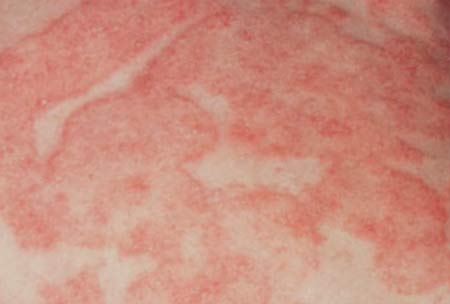
Tinea versicolor is a disease that is not infectious in nature. The main cause is considered to be microorganisms that are represented in the body by opportunistic flora. Ringworm is characterized by spots that have brown and yellow shades. Only the stratum corneum is affected.
Important! The disease is not a contagious form, unlike those listed above.
Treatment and relapse prevention are important for children. There are no complications after the illness. Many parents begin therapy for their children for aesthetic reasons. The reason is noticeable spots on the skin that spoil its appearance. Therefore, treating patients with this form at home is not prohibited.
The following factors create favorable conditions for the proliferation of microorganisms:
- Intense physical activity.
- Increased sweating.
- High ambient temperature.
- Wearing warm clothes.
- Taking antipyretic pills.
Rashes most often appear on the stomach, back, and torso. Rarely there are children with localized pityriasis peeling on the face in the cheek area, under the eyes, on the scalp. In addition to the appearance of scales, mild itching may bother you.
Treatment of ringworm
A pediatric dermatologist prescribes medications for local treatment of affected areas and oral administration. Parents should know how to treat lichen and follow all recommendations to prevent relapse of the disease. It includes:
- Preparations for local application.
- Forms for oral administration.
- Supportive therapy.
- Traditional medicine.
Ringworm ointment for children is used only after 2 years of the child’s life. Mycoseptin, Clotrimazole, and Ketoconazole are effectively used. It is recommended to smear the affected areas of the skin with salicylic ointment, sulfur-tar and sulfur ointment for lichen. In the pharmacy, according to a prescription, special medicines are prepared for some children - Vidal's milk and Lassar's paste. Treat stains with iodine and salicylic acid.
Knowing what lichen looks like in children, if treated in a timely manner, most often, local therapy is sufficient. When the forms are running, system tools are also included in the scheme. For this purpose, anti-lichen tablets are used. Griseofulvin is considered effective. The dosage is prescribed depending on age and severity.
With a mild course, it is important to be able to distinguish lichen from dermatitis. To understand the diagnosis of the child, additional studies are carried out to accurately determine the cause of the rash.
Treatment of pityriasis rosea
Treatment of pityriasis rosea should begin with the following groups of drugs:
- Antihistamines (“Suprastin”).
- Antibiotics (“Erythromycin”).
- Systemic interferons (“Ridostin”).
- Systemic glucocorticoids (“Prednisolone”).
Ointment for pityriasis rosea is used only after a doctor's prescription. When the first rash appears, it is not recommended to start treating the child on your own. Zinc ointment is prescribed for treating stains and Vishnevsky ointment and water-zinc mash. Antihistamines must be used. Calcium gluconate is used in 3-5 injections.
The duration of therapy depends on the severity. The effectiveness of a remedy for lichen is judged by the positive dynamics of the condition and the reverse development of the rash. Physiotherapy is used. PUVA therapy is aimed at slowing down the proliferation of cells in the spots. Ringworm in an infant is treated in this way for no more than 10 sessions.
If a child has tinea versicolor, topical corticosteroids are included in the regimen. Such patients must be given an individual dose of antihistamines. This is due to a possible allergic reaction to hormones. Lichen can be treated with retinol-based medications, which eliminate the itching sensation.
Treatment of herpes zoster
Antifungal ointments will not be effective in this case. Acyclovir is a drug aimed at fighting viruses. The course of treatment for herpes zoster is 10 days. If pain occurs, Ibuprofen is used. If it is not possible to cure lichen and a secondary infection occurs, then antibiotics are needed. Levomekol ointment is used locally.
During the treatment of shingles, antiseptics are used as needed. The effective anti-inflammatory ointment “Sanaflan” will help you cope with itching. It is important to remember that washing with shingles is not recommended, but depending on the severity of the condition, the attending physician may recommend hygiene procedures.
